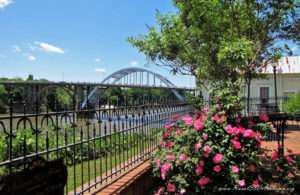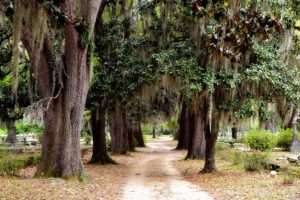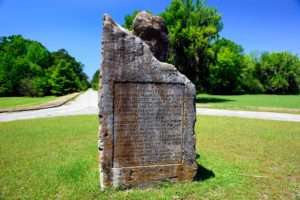Brown Chapel AME Church, with its imposing twin towers and Romanesque Revival styling, was built in 1908 by black builder – of whom little is known – A.J. Farley. This church and its congregation played a major role in the events that led to the adoption of the Voting Rights Act of 1965. Brown Chapel was the starting point of the three Selma-to-Montgomery marches in 1965 and it served as the meeting place of the Southern Christian Leadership Conference during the Selma Voting Rights Movement. The nation’s reaction to Selma’s “Bloody Sunday” march is widely credited for the passage of the 1965 Voting Rights Act in the United States Congress. Brown Chapel was added to the Alabama Register of Landmarks and Heritage on June 16, 1976 and declared a National Historic Landmark on February 4, 1982. In front of Brown’s Chapel is a monument that was dedicated to Dr. Martin Luther King Jr. in 1979.
This historic church is located at 410 Martin Luther King Street which is near downtown Selma, AL (GPS coordinates 32.412361,-87.016250).





